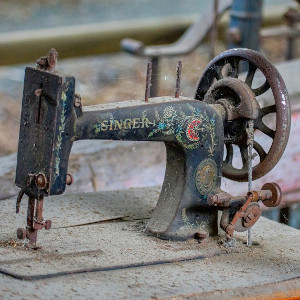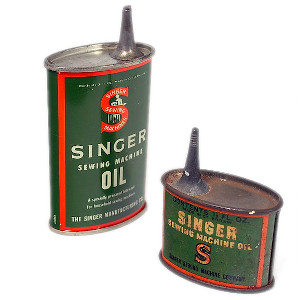 We have all evolved from the era of wearing handmade stitched garments into the digital era of online purchases. But tear in those garments still needs a stitch on time. And the good old sewing machine never disappoints.
We have all evolved from the era of wearing handmade stitched garments into the digital era of online purchases. But tear in those garments still needs a stitch on time. And the good old sewing machine never disappoints.
Sewing machines, invented during the first industrial revolution, has improved the work efficiency for the clothing industry. It has often been transferred from one generation to the other. More than using a sewing machine, maintaining it and keeping it at the top condition so it’s always ready to be used, is a big responsibility. If you wish to keep your sewing machine for maximum usage, give it regular care. Let’s hve a look how it can be achieved.
How Often Should You Clean Your Sewing Machine?
Though It depends on the usage of the sewing machine, cleaning after every 10 hours of use will be a good practice.
| Usage | Cleaning Required |
| Daily | Once a week |
| Once a week | Once a month |
| Occasional | Every three months |
It is advisable to keep a check on the bobbin case for the accumulation of lint. Quilters recommend cleaning the bobbin case after about three bobbin changes.
Additionally, whenever you experience some trouble during sewing, follow these steps for a smooth run:
Re-thread the needle and bobbin before starting over.
Insert a new and clean needle.
Clean the machine.
Anytime you feel your cleaning was not sufficient enough, contact an authorized dealer who can conduct necessary maintenance.
What you need to clean a Sewing Machine
Soft cloth
Vacuum cleaner (handheld preferably)
Screwdriver
Oil (recommended by the manufacturer; check the machine manual)
Nylon brush
Tweezers to take out small particles
How To Clean A Sewing Machine: Steps
Unplug The Machine
Before cleaning any electrical device, switch it off and remove the cord, so you are sure it will not start accidentally. Now, keep the needle in the “UP” position.
 Remove the throat plate
Remove the throat plate
The throat plate is where the maximum dust gets gathered. If unsure how to do it, check the machine manual on how to remove the throat plate. In some machines, the throat plate can be just slid to open.
It’s time to Clean Up!
Grab those tweezers and remove all the dirt that has accumulated underneath the machine. If the machine has a bobbin case, take it out and clean it thoroughly.
Before removing the bobbin case, just take a picture of it, so you can see where it needs to be put back.
Let us look into cleaning the bobbin area of both top-loaded machines and front-loaded machines
Top-loaded machines have drop-in bobbins. Take out the bobbins and the bobbin case to start cleaning the area. The metal plate around the feet teeth needs to be removed by unscrewing certain screws to access the bobbin area from the top.
Now start by taking out whatever dirt and lint you can see with the help of the tools.
Try to remove as many parts as possible to clean with a soft cloth and put back. Be cautious about removing only those parts, which can be put back easily. Follow the manual instruction if possible, to know more about those parts.
For front-loaded machines, accessing the bobbin area is much easier. You can do so by removing the bottom plate, bobbin, and the bobbin case. After doing this, you just have to work with a nylon brush to remove dirt and lint from the area. Carefully move the brush towards yourself to avoid moving the dirt inside the machine.
Vacuum Cleaning
When used on a low sucking level, the vacuum will quickly drive out the lint and dirt. Avoid using an air blower. It will push the dirt and moisture into the machine.
 Oiling (if required)
Oiling (if required)
Once all the lint and dirt have been removed, start with the oiling process. Adequate lubrication is essential to keep those machines rolling smoothly. To apply oil, first, check the area where friction happens when the hand wheel is rolled back and forth. Then, the oiling can be done at that place to prevent rusting. After putting oil, move the hand wheel back and forth to circulate the oil well.
Replace the needle
Remove the old needle and wipe clean the surface with a soft cloth. The input on the new one for further use. Clean out any excess oil lying on the machine.
What type of oil can be used for a sewing machine?
The regular sewing machine oil that you get with the purchase of your machine works best always. But there can be cases of emergency where you run short of the oil.
3 in 1 oil
Originally designed to be used in bicycles gradually became a common household item for lubricating other machines, including a sewing machine. Compared to the regular sewing machine oil, 3 in 1 oil has a sticky nature and might not be that good for regular use.
 Petrochemical-based oils
Petrochemical-based oils
It is watery, odorless and can be used as a substitute.
Clock-oil
It is good for metal-on-metal parts of the sewing machine.
Tri-flow oil
The best substitute for sewing machine oil is the Tri-flow oil, which is petroleum-based. It is made up of microparticles of Teflon, making it non-sticky. It is a good lubricant suitable for wood, plastic, metal, and rubber surfaces.
How To Clean A Sewing Machine: Pro Tips
- Always keep the machine covered when not in use. Otherwise, lint dust will accumulate inside the machine.
- Avoid the use of an air blower to clean the sewing machine. The air pressure will push more dirt into the machine, which is not desirable.
- Do not blow air from your mouth into the machine. Moisture contamination will rust the metal parts of the machine.
- Refrain from using excessive amounts of oil. Use drops of oil and run the machine to spread it uniformly. If oil builds up inside the machine, it will give rise to hairballs and dirt formation.
- Check the machine manual for oiling information. Some machines do not require oiling at all.
- There might be excess oil inside the machine sometimes. In that case, run a clean muslin cloth through the machine until it comes out clean.
- Keep the sewing machine in an area where the chances of dust accumulation are less.
- Before starting out a new stitching work, always test drive with scrap fabric to check the presence of residual oil.
Most importantly, keep your sewing machine in a permanent place like your other machines in the house. With proper care and oiling, your machine will run smoothly. It is an excellent feeling of pride to transfer the joy of sewing from one generation to another.


